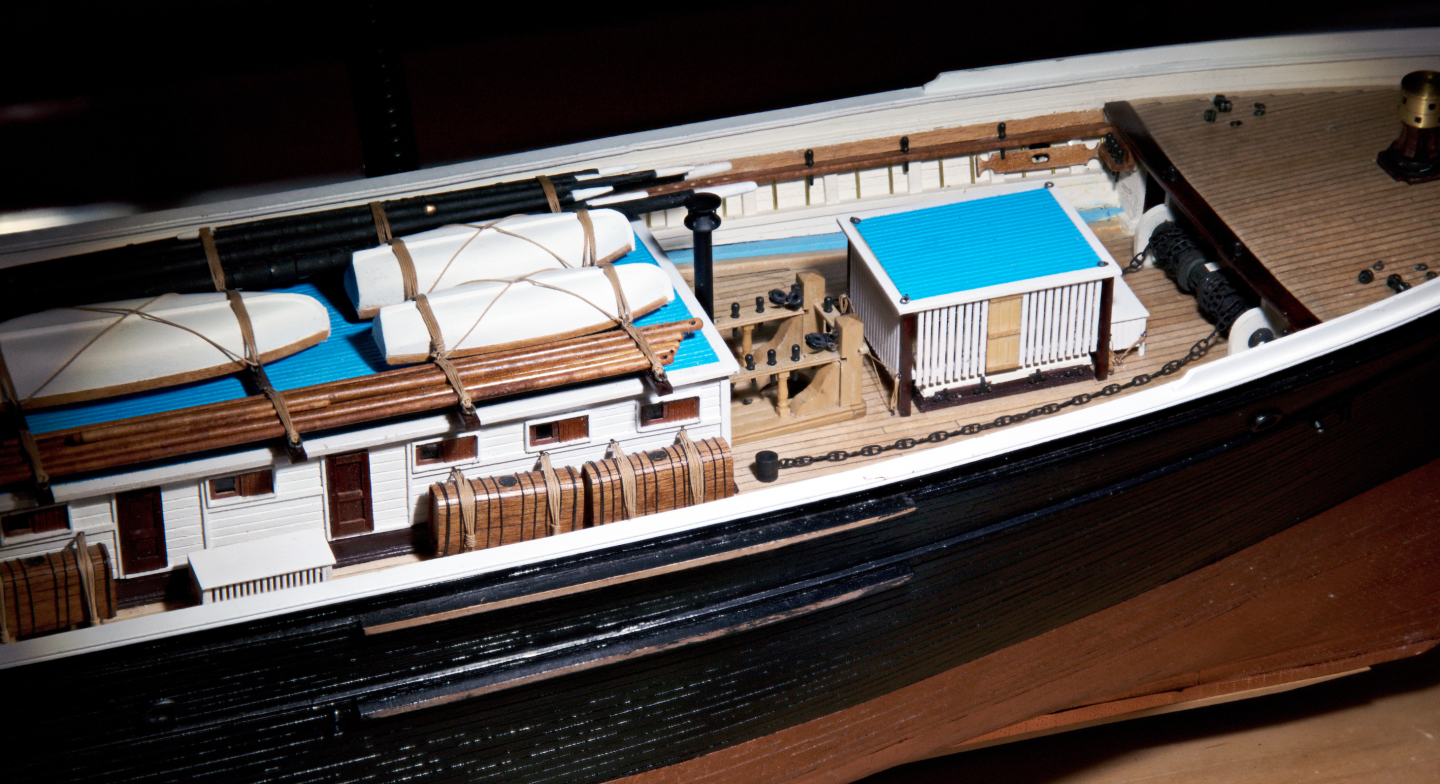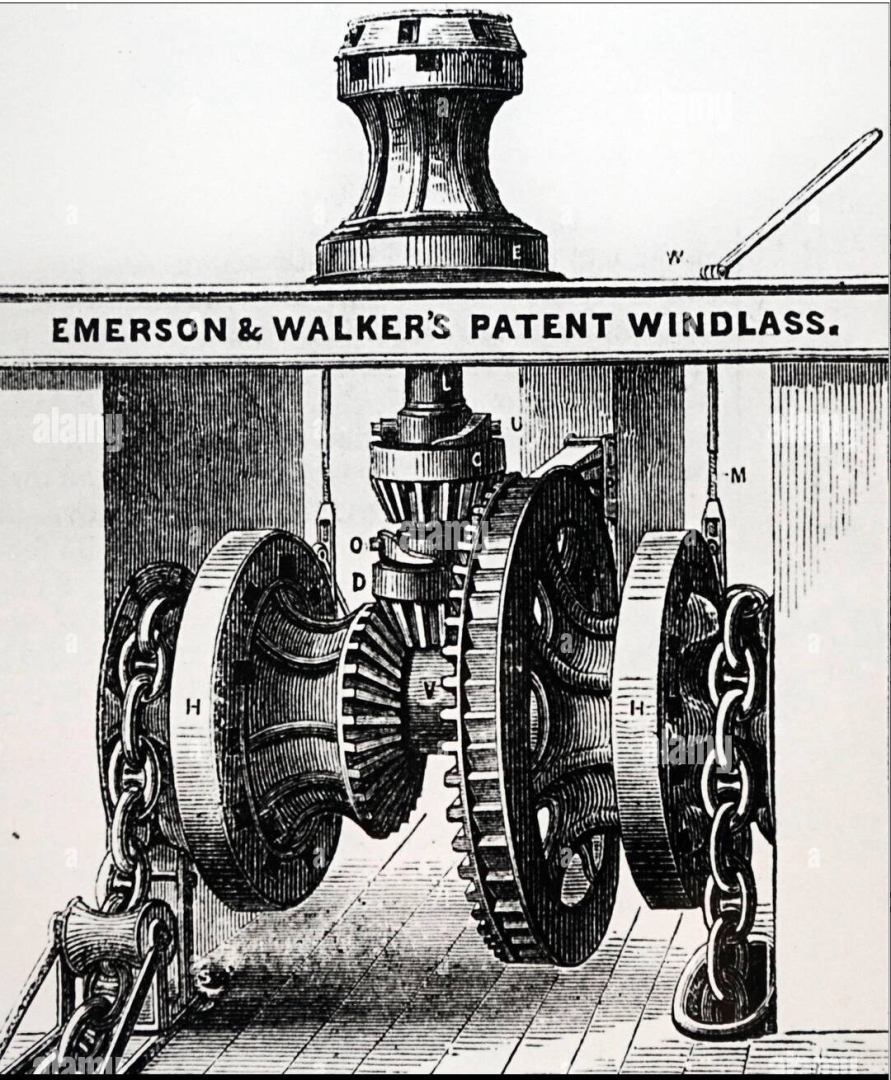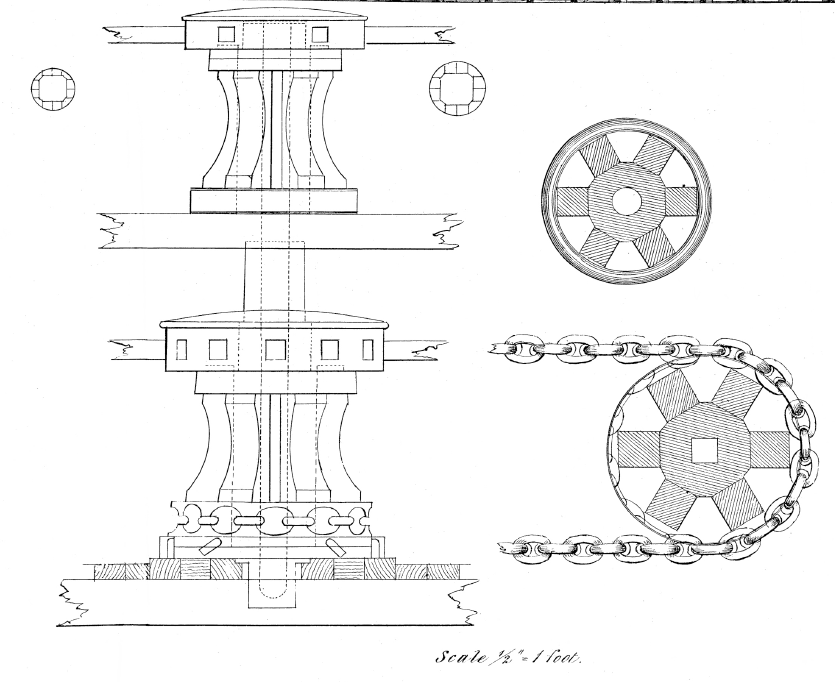
sob
Members-
Posts
93 -
Joined
-
Last visited
Content Type
Profiles
Forums
Gallery
Events
Everything posted by sob
-
of course I want 'remain as faithful as possible to Donald McKay's historically accurate vessels" your bow revisions do show " a more refined impressive and complete clipper prow" I just do not agree that there is reason to think that McKay's idea would have sprung forth on his first few ships quire a refined but, in the end, there is no actual data to show that either of us us correct in our views - so I'm going to leave it there but do keep up the very good work shown in this blog Scott
-
ps - I fully think that just about all clipper ships, McKay's and others, had what had been in use for many years - "navel hoods" which were beefed up structures around the hawes holes and I expect that is what McLean was referring to as I mentioned a few posts ago - I do not think that the McKay structures would have been referred to as "navel hoods" anyway, we may be reaching a point of diminishing returns here
-
https://www.sobco.com/ship_model/index.html see https://www.sobco.com/ship_model/fc/details/Flying_Cloud_Details.html for note on possible inaccurate description by McLean to be clear - I have no doubts that the structure on the bow of the Glory is what you describe as a strengthening structure but I have not seen any evidence that a structure of the same size or appearance was on the early McKay ships - it would be logical that McKay's idea for his hood evolved over time (as engineering usually does) so I do not know what a strengthening structure would have looked like on the Flying Cloud (particularly given the outline on the Mary McKay drawing (which was done quite a while after McKay had built his last clipper so there would have been no reason to still he hiding details) I do NOT want to pick a fight here but an exchange of ideas is useful Scott
-
I wish there was more evidence for them in the early McKay clippers as I mention on my website, some research has shown that McLean's descriptions of McKay's ships may not have told the whole story so that McKay's competitors would not know the details McKay wanted hidden but the hiding of this particular detail seems to have been rather successful (assuming you and Rich are correct) at this point it seems to be different opinions by different people Scott
-
note that he Emerson Walker company was founded in 1870 and patented a windlass the same year so that particular device would not have been around in the 1850s when the McKay ships were built ( unless it was a different Emerson Walker (a US based one) see https://www.gracesguide.co.uk/Emerson,_Walker_and_Co
-
my guess is that McLean did not do any of the drawings - I've not seen any reason to think he was a draftsperson he was a good friend of McKay (it is said) and I've assumed the drawings in the booklet came from McKay or were commissioned by McKay. The booklet was basically a advertisement for the ship and McKay so it seems quite likely that KcKay had a big hand in it - maybe McLean wrote the text (it is in his style) but I expect that McKay reviewed & approved the final text
-
ps - if someone is interested - the entry point for the McLean booklet on the Great Republic is https://www.sobco.com/ship_model/Great_Republic/index.html I posted a pdf of the booklet and pdfs of each of the drawings which claim to show details of the construction of the ship and was published about the same time was the ship was built (and before she burned) Since I have found no evidence that McLean was a draftsman I assume the drawings were done by someone under the supervision of McKay himself.
-
re: patented capstan & Flying Cloud see https://www.sobco.com/ship_model/fc/details/capstans.htm in particular "The Monthly Nautical Magazine of May 1855 says that Allyn's patent power capstans[7] had been furnished to the Flying Cloud within “the past year”[8], implying that the original capstans had been replaced. That leaves mahogany and brass, something McKay was using around the time he built the Flying Cloud, as the likely materials for the Flying Cloud’s original capstans. "
-
a different topic but may be interesting - someone mentioned that Lars Bruzelius's site was now offline two things: 1/ the Internet archive archived his site and you can get the contents at https://web.archive.org/web/20240531215650/http://www.bruzelius.info/Nautica/Nautica.html 2/ I downloaded the Boston Daily Atlas files and have put them up on my website https://www.sobco.com/ship_model/BDA/BDA.index.html Scott
About us
Modelshipworld - Advancing Ship Modeling through Research
SSL Secured
Your security is important for us so this Website is SSL-Secured
NRG Mailing Address
Nautical Research Guild
237 South Lincoln Street
Westmont IL, 60559-1917
Model Ship World ® and the MSW logo are Registered Trademarks, and belong to the Nautical Research Guild (United States Patent and Trademark Office: No. 6,929,264 & No. 6,929,274, registered Dec. 20, 2022)
Helpful Links
About the NRG
If you enjoy building ship models that are historically accurate as well as beautiful, then The Nautical Research Guild (NRG) is just right for you.
The Guild is a non-profit educational organization whose mission is to “Advance Ship Modeling Through Research”. We provide support to our members in their efforts to raise the quality of their model ships.
The Nautical Research Guild has published our world-renowned quarterly magazine, The Nautical Research Journal, since 1955. The pages of the Journal are full of articles by accomplished ship modelers who show you how they create those exquisite details on their models, and by maritime historians who show you the correct details to build. The Journal is available in both print and digital editions. Go to the NRG web site (www.thenrg.org) to download a complimentary digital copy of the Journal. The NRG also publishes plan sets, books and compilations of back issues of the Journal and the former Ships in Scale and Model Ship Builder magazines.




